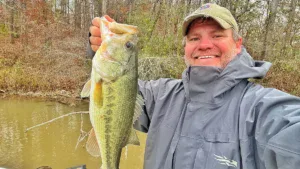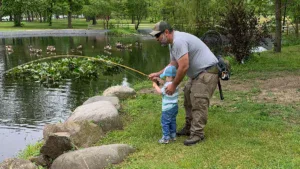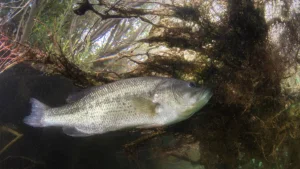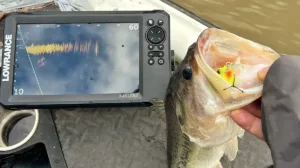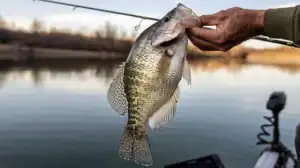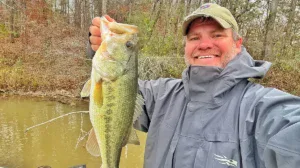I want to start off by apologizing right off the top; I’m about to complain about the cold and I live in Alabama. I can hear some of our brothers and sisters to the north right now saying “You don’t know what real cold is.”
I’ll admit, I don’t. But I do know we invented cars, trains and planes long ago and I’d have hopped one the first time I ever realized mercury could go in a negative direction. Alabama gets as cold as I’m willing to bear and there have been times where I even load up and head further south to escape this weather.
But for many, heading further south isn’t an option. As we make it past the holiday season and really start to settle into the coldest few months of the year, cabin fever can become a pretty legitimate ailment. Some use hunting as their outlet until the waters are warm enough to fish in again. Some chase fish around on the ice but even those willing to do that are in a bit of limbo now as the ice isn’t quite thick enough to venture out onto yet in many places.
So, having had a small case of cabin fever myself recently, I decided to do a little casting practice in and around the house and shop and have found a few things to pass along if you’re looking for something to do yourself to combat the cold.

Pitching to targets
A lot of us have done this already over the years. Perhaps a couple buddies were over and there was a rod or two leaned against the wall in the corner of the room. One guy grabs it, makes a pitch or two and suddenly a full-blown casting competition breaks out. Soon there are bowls all over the floor and as much trash talking going on as there is casting.
Well this can actually be a very beneficial exercise to either sharpen your skill set or keep it sharp through the winter months. I’ve done this in the past just messing around and usually used plastic bowls and cups but I realized while reenacting some of these things for this article, you can actually up the stakes a little by using ceramic or glass plates. The reason being, they give you an audible indicator as to how well you’re doing.
You can pretty roughly toss a jig towards a plastic bowl and it’ll bounce around and fall in. But you have to gently place a bait onto a ceramic plate, which is what you will want to do in a real-life scenario. You won’t want to just plop a bait by a log. You’ll want to slip it in with as little disturbance as possible. The lighter you lay the bait on a ceramic plate, the lower the sound will be till you can get to where you can put it on there with virtually no sound at all. Now though, if you get down the fine china for this and break one, don’t rope me into your explanation.

Casting under obstacles
If you have a porch, bench or just a board and a couple of buckets, you can easily put together a few obstacles to simulate docks and low hanging bushes. Practicing skipping without water is a little tricky I’ve found. If you just try to bounce the bait off the grass or dirt like you would the water’s surface, you’ll soon find your bait does more plowing than skipping and the backlashing gets out of hand quickly.
Concrete does a pretty good job if you’re fortunate enough to have a shop or pretty smooth driveway to practice on. And if not, a large piece of cardboard or a smooth sheet of plywood will help your bait skip a little better. Definitely pick an older bait you’re not that found of though, because a brand new one will get beat up fast. But it is important to make sure you pick a bait that closely resembles one you’ll use out on the water so you can get used to the weight of it.
You can do a lot to get your bait under an obstacle without even trying to skip it. Try using underhanded pitches and sidearmed roll casts instead. To do that, it’s also a good idea to stand on something if you typically fish from a boat to simulate the raised deck. This will give you more room for your bait to clear the ground, just like you’d have in a boat to help your bait clear the water.
Obviously the height will vary depending on what type of boat you fish from. In a kayak, you’re basically right at the water’s surface. In a jon boat, you’re likely between 6 inches and a foot above the surface and in a fiberglass boat, probably 18 inches or more. So pick something to stand on that represents that height difference and you’ll be a lot closer to simulating a real-world setting.

Dialing in reels
This is probably the greatest thing you can gain from practicing your casting while off the water. When you’re on the water, each cast is different. There are likely a dozen variables for each cast that your brain is working through without you even realizing it. Boat position, wind speed, wind direction, distance from the cover, weight of the bait and on and on. And you have to adjust your reel accordingly until you find a good setting.
In this more controlled environment, you can make basically the exact same cast over and over to try to get your reel dialed in exactly how you’ll need it when you’re out there on the water. For instance, a roll cast can be a little tricky for some. You want to cast the bait by rolling your rod to one side or the other and releasing the bait just above the water’s surface, where you’d like its trajectory to stay throughout the cast.
It’s hard to get the reel to free spool at the right speed to do this though. Set the brake too tight and your bait rises up on you and either collides with cover or makes a big splash on its final descent. Set it too loose and the bait careens into the water’s surface and you have a bird’s nest in your hands. But with practice, you can find the right setting of the brake to let you whip a bait under cover with the perfect roll cast.
You can also gauge how far you can bomb cast a bait better on dry land. Make the longest cast you can, set your rod down and walk out to the end of the cast and mark your bait. Reel it in, tweak your settings and repeat til you figure out how to get a little more distance out of your gear. Ten more feet can make all the difference when you’re back on the water trying to deep crank a ledge in the summer.

In conclusion
Summer… sweet, sweet summer. It seems like a distant dream but it’ll be here before you know it. Funny thing is, we’ll soon be cursing the heat and be ready for it to cool off. But in the meantime, don’t let cabin fever get you down. If nothing else, practice your casting. See if you can get better at placing your bait as gently on a target as possible, putting it under obstacles and getting as much out of each casts as you can so that when you do hit the water again, you won’t be rusty. Perhaps you’ll even be better at the start of this fishing season than you were at the end of the last one.


